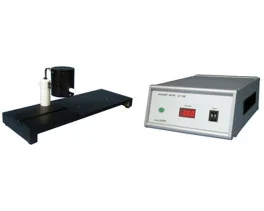Authors
C. Chambon, D. Duteil, A. Vignaud, A. Ferry, N. Messaddeq et al.
Lab
Université de Strasbourg, Collège de France, Institut de Génétique et de Biologie Moléculaire et Cellulaire, Illkirch, France.
Journal
PNAS
Abstract
The anabolic effects of androgens on skeletal muscles are thought to be mediated predominantly through the androgen receptor (AR), a member of the ligand-dependent nuclear receptor superfamily. However, despite numerous studies performed in men and in rodents, these effects remain poorly understood. To characterize androgen signaling in skeletal muscles, we generated mice in which the AR is selectively ablated in myofibers. We show that myocytic AR controls androgen-induced insulin-like growth factor IEa (IGF-IEa) expression in the highly androgen-sensitive perineal muscles and that it mediates androgen-stimulated postnatal hypertrophy of these muscles. In contrast, androgen-dependent postnatal hypertrophy of limb muscle fibers is independent of myocytic AR. Thus, androgens control perineal and limb muscle mass in male mice through myocytic AR-dependent and -independent pathways, respectively. Importantly, we also show that AR deficiency in limb myocytes impairs myofibrillar organization of sarcomeres and decreases muscle strength, thus demonstrating that myocytic AR controls key pathways required for maximum force production. These distinct androgen signaling pathways in perineal and limb muscles may allow the design of screens to identify selective androgen modulators of muscle strength.
BIOSEB Instruments Used
Grip strength test (BIO-GS3)

 Douleur - Allodynie/Hyperalgésie Thermique
Douleur - Allodynie/Hyperalgésie Thermique Douleur - Spontanée - Déficit de Posture
Douleur - Spontanée - Déficit de Posture Douleur - Allodynie/Hyperalgésie Mécanique
Douleur - Allodynie/Hyperalgésie Mécanique Apprentissage/Mémoire - Attention - Addiction
Apprentissage/Mémoire - Attention - Addiction Physiologie & Recherche Respiratoire
Physiologie & Recherche Respiratoire




































 Douleur
Douleur Système Nerveux Central (SNC)
Système Nerveux Central (SNC)  Neurodégénérescence
Neurodégénérescence Système sensoriel
Système sensoriel Système moteur
Système moteur Troubles de l'humeur
Troubles de l'humeur Autres pathologies
Autres pathologies Système musculaire
Système musculaire Articulations
Articulations Métabolisme
Métabolisme Thématiques transversales
Thématiques transversales Congrès & Meetings
Congrès & Meetings 